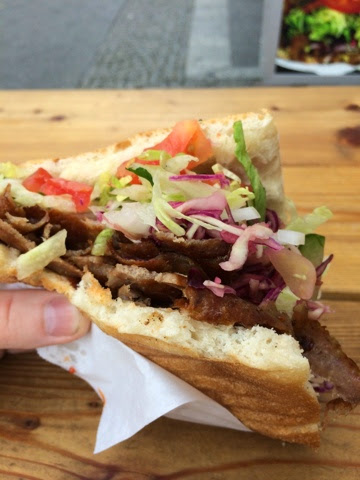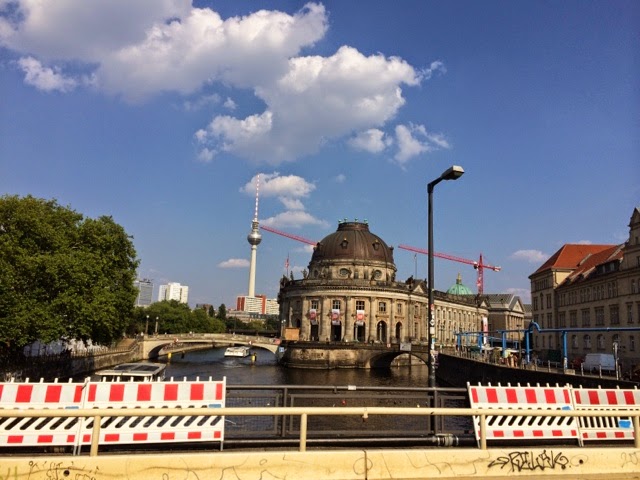Lucky for me I live in the most diverse, engaging and fast-changing city this side of the Rockies and before Montreal: Calgary!
I hope this will give a taste to some of my new friends around the world of what my city is like. Perhaps even a few locals might learn a thing or two as well. Let us begin!
 |
| Mural on 4th Avenue Bridge pier into Downtown Calgary, near the East Village District |
Calgary's Downtown is dominated by office towers; most of these built in the last 30 years as the economic boom continued. Calgary has more office space in the city centre than many larger cities: nearly twice as much as Vancouver, a city of more than 2 million people.
The Calgary skyline is below. The Calgary Tower no longer dominates the skyline, the office buildings around it reach up to 60 storeys and top out at 230 metres high, the tallest in the Canada outside Toronto. The towers in the foreground are residential towers in the Beltline district, the urban hub of Calgary where thousands of apartments, hipsters, bars and restaurants serve as the beating heart of the city:
An criticism that is often levied on urban Calgary is that as a business-only town everyone goes home after-working hours and the city centre is quiet in the evenings. While there may have been some truth to this statement in the 1980s or early 1990s, it could not be farther from the truth in 2014. The city centre has many lively and diverse districts, with bars and restaurants teeming with thousands of people to the early morning hours in areas like the Beltline, Mission, Stephen Ave and Chinatown amongst others.
 |
| Stephen Avenue during Sled Island, a indie-music festival of 200+ bands spread over 30 venues in the beginning of the summer. Sled Island celebrates urban life, music, bicycles and the arts; a true gem on Calgary's diverse and busy festival scene. Check out my daily play-by-play during Sled Island 2014 for more details. |
My old apartment in the Cliff Bungalow-Mission area - looks like a house, but is restructure inside as 6 apartment units. The house was built in 1911 by the Canadian Pacific Railway for railway workers as the area was first being settled. Long before the oil industry, railways dominated the western Canadian prairie provinces. Calgary was a railway town much like places such as Brooks, Red Deer and Medicine Hat. Unlike places like Brooks, Red Deer and Medicine Hat, Calgary out-competed similar railways towns and became the predominate urban centre of the the prairies.
Prince's Island is Calgary's "central park" and is one of the most loved public spaces in the city. Today it was hosting Carifest - a celebration to Caribbean-Canadian culture. Unfortunately it was a cloudy and cold day so it was otherwise quite quiet. On sunny days you will see thousands of people slack-lining, unicycling, sun-tanning, frisbee-ing and generally loving the outdoors in this pristine park at the heart of the city:
A new addition, but quickly becoming the place to see in Calgary is the Peace Bridge, a designer pedestrian bridge spanning the Bow River between the Sunnyside neighbourhood and Downtown. Wedding parties, buskers and photo-takers are always out in number here. It actually doesn't function well as a bridge because too many people stand in the way trying to get the perfect picture in the middle of the bicycle lane. I can't argue with them though it is an amazing bridge:
 |
| Inner-city Calgarians are typically a fashionable bunch but not this fashionable: this is definitely a prom/graduation photo-shoot. Picture from June 2014. |
One thing that these pictures cannot describe is the attitude of the city. While Calgary lacks the history and some of the human-scale elements I noted during my European urban posts, it makes up for it in the way that citizens deem their city. Unlike some of other places I have visited, Calgary is a place where people believe that they can change their city for the better. There is no stagnation here only relentless progress; the city changes faster and more extensively in a few years than many cities will change in a lifetime. Everything is renewed, questioned and challenged in the name of improving the city that so many here love. There are many challenges that come with the speed that Calgary changes, but many opportunities too.
 |
| Sunset at Olympic Plaza, during a concert for Sled Island. In the winter the Plaza hosts a skating rink. |
At this pace, imagine where Calgary will be in another 120 years?
This is only the summer: there is another whole season here called winter. That post might be a little bit longer :)
---
BONUS PICTURE: Hello friends from Munich! Guess what I found on the Bow River today?? Turns out the 2013 floods were not all bad when they diverted the river in unexpected ways. Bring your boards and come for a visit!
 |
| This is along the Bow River pathway system, looking across to Sunnyside from Downtown near the Louise Bridge. |






































